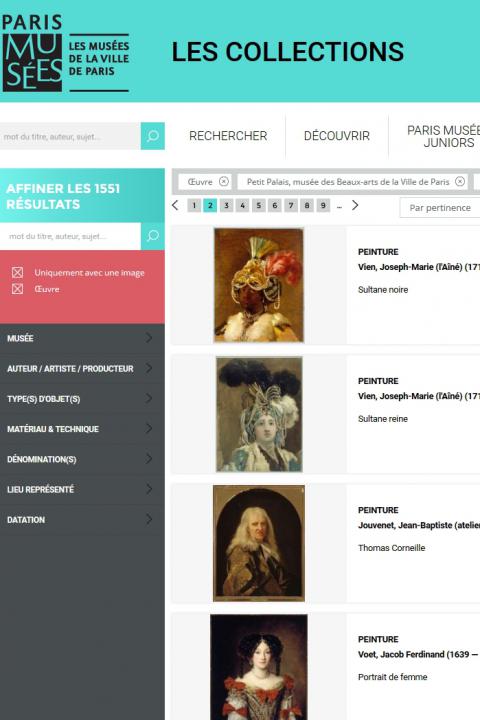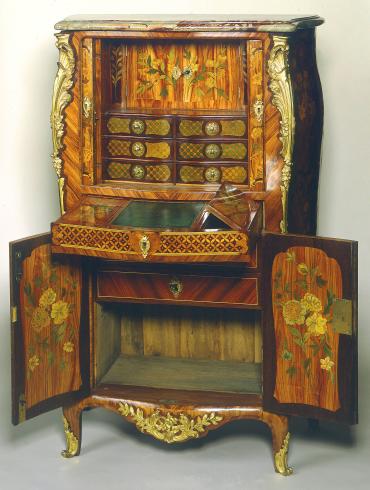Roger Van der Cruse (1728-1794), known as Lacroix (a translation of his surname), was for a long time only known by the mysterious stamp of RVLC.
Roger Van der Cruse (1728-1794), known as Lacroix (a translation of his surname), was for a long time only known by the mysterious stamp of RVLC.
Although he mainly worked for other, the dealer Poirier (circa 1720-1785) and the cabinetmakers Pierre IV Migeon (1701-1758) and Jean-François Oeben (1721-1763), he took on major commissions for his guild. He produced work for the Crown in the early 1770’s, through the intermediary of the Court cabinetmaker Gilles Joubert (1689-1775).
After becoming a master craftsman in 1755, he first practised flower pattern marquetry, and then favoured geometric patterns: lattices (some featuring cornflowers), interlocking lozenges and intertwined hearts and lozenges. In the 1760’s, he and Oeben worked with interlocking circles. At a time when mahogany was the most popular wood, he preferred cladding made of light woods, rosewood and lemon tree wood. He mainly produced light furniture and chests of drawers, with straight bodies on curved feet.
RVLC made several secretary desks with a slightly curved shape opening with sliding panels, featuring toned-down rocaille bronzes. Later, the finished model of the secretary desk would open with a lid flap or cylinder. Inside, the partially coloured marquetry has retained its original brightness.

City of Paris municipal collection's website
The collections portal can be used to search the collections of Paris’s 14 municipal museums (approximately 336,000 works, including 43,000 belonging to the Petit Palais).
It is also possible to download around 12,000 images of the museum’s works free of charge.
Access the Museums of the City of Paris collections portal
Extern databases
Discover a selection of databases online presenting works from the Petit Palais or documents concerning the history of the museum.

